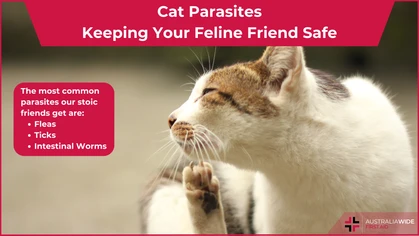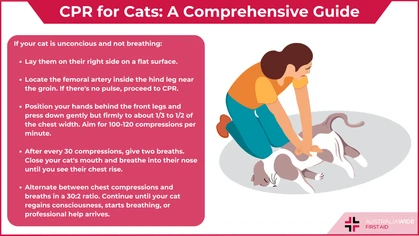Unleashing Canine Contentment in the Face of Boredom

Pets
 In the hustle and bustle of our daily lives, it's easy to overlook that our furry friends may not be leading lives as fulfilled as we'd like.
Just like humans, dogs too can suffer from monotony, especially those spending large amounts of time indoors. Recognizing and addressing boredom in our canine companions is crucial for their overall well-being.
This article aims to guide you through the tell-tale signs of boredom in dogs, the potential impacts it can have on your pet's health and happiness, and practical tips to alleviate this issue.
Join us as we delve into ways of 'unleashing' your dog's contentment.
In the hustle and bustle of our daily lives, it's easy to overlook that our furry friends may not be leading lives as fulfilled as we'd like.
Just like humans, dogs too can suffer from monotony, especially those spending large amounts of time indoors. Recognizing and addressing boredom in our canine companions is crucial for their overall well-being.
This article aims to guide you through the tell-tale signs of boredom in dogs, the potential impacts it can have on your pet's health and happiness, and practical tips to alleviate this issue.
Join us as we delve into ways of 'unleashing' your dog's contentment.
Do Dogs Get Bored?
Dogs are more susceptible to boredom due to their inherent nature and the environment they live in. Originally bred for specific tasks like herding, hunting, or guarding, most dogs today lead a sedentary lifestyle that starkly contrasts with their ancestral roles. Having limited opportunities to express their natural instincts can lead to a state of ennui. Additionally, the lack of mental and physical stimulation, especially in the absence of their human companions, can exacerbate their boredom. Dogs are social animals who thrive on interaction, so periods of prolonged solitude can be particularly hard for them. Finally, a lack of variety in their daily routines can contribute to a dog's boredom. Just as humans enjoy novel experiences, dogs too revel in new smells, sights, and activities. When these elements are lacking, your pet may easily fall prey to the doldrums of monotony.
Destructive behaviour is a sure sign that your pup needs some more entertainment.
Signs and Symptoms of Dog Boredom
There are many signs to watch out for that point towards your dog being bored:- Chewing and Destruction: Dogs that are bored will often engage in destructive behaviour such as chewing on furniture, shoes, or other household items. This is an attempt to keep themselves entertained and occupied.
- Excessive Barking or Whining: A bored dog may start to bark or whine excessively as a way of getting attention or expressing their frustration.
- Digging: If your dog has taken up digging in the yard or even in their bedding, it could be a sign that they're trying to entertain themselves.
- Overexcitement: A dog that lacks stimulation may become overly excited when you do interact with them, as they've been craving attention and activity.
- Pacing or restlessness: Dogs who are bored may pace back and forth or seem restless and unable to settle down.
- Increased Sleep: Dogs who have nothing to do may sleep more than usual. This isn't healthy sleep, but rather a way to pass the time.
- Repetitive or Compulsive Behaviours: Bored dogs might start displaying repetitive or compulsive behaviours such as tail-chasing or excessive licking.
- Weight Gain: If your dog is eating out of boredom but not getting enough exercise, they may start gaining weight.
- Changes in Eating Habits: Bored dogs may eat more or less than usual, or show decreased interest in their food, indicating that they're not content.
- Aggression: In serious cases, a lack of mental and physical stimulation can lead to frustration, which can manifest as aggression towards people or other animals.

Aggression is a dangerous side-affect of prolonged boredom.
The Impact of Boredom in Dogs
Boredom in dogs impacts their well-being on multiple levels, including their physical, mental, and social health. Physically, a bored dog may engage in destructive behaviours or overeat, both of which can lead to serious health issues such as damage to teeth and gums, obstructions from ingesting non-edible items, or obesity, which can contribute to a host of associated ailments like diabetes, arthritis, and heart disease. Mental health is equally affected. Dogs, like humans, require mental stimulation to thrive. A lack of engagement can lead to stress, anxiety, and even depression. Repetitive, compulsive behaviours, such as excessive licking or tail chasing, are often signs of mental distress in dogs. Socially, dogs deprived of sufficient interaction may develop poor social skills. This can lead to aggression or fear towards other animals or humans, affecting their ability to form healthy relationships. Overexcitement when finally presented with social opportunities may also lead to inappropriate behaviour, further straining their social interactions. In conclusion, boredom can significantly hinder a dog's quality of life, manifesting in a range of physical, mental, and social issues. Therefore, taking measures to alleviate boredom is not just about enhancing your dog's happiness, but also about preserving their overall health and well-being.
Physical activity plays a very pig part in the happiness of your dog.
The Solution to Dog Boredom
Preventing and alleviating canine boredom involves a multifaceted approach focusing on physical exercise, mental stimulation, and social interaction.- Physical Exercise: Regular physical activity is essential to keep a dog's body and mind healthy. Walks, runs, fetch games, tug-of-war, or even agility courses can provide dogs with ample opportunity to expend energy and satisfy their instinctual needs. Remember, an exercised dog is a content dog.
- Mental Stimulation: Engaging your dog's mind is equally important as physical exercise. Puzzle toys, KONGs filled with treats, interactive games, or trick training sessions can keep your dog mentally stimulated. Some owners also opt for scent games, capitalizing on a dog's keen sense of smell, to provide intellectual challenge and novelty.
- Social Interaction: Dogs are pack animals and thrive on social interaction. Regular play dates with other dogs, trips to dog-friendly places, or simply time spent with family members can significantly reduce feelings of loneliness and boredom.
- Environment Enrichment: Optimizing your dog's environment to be more stimulating can also help alleviate boredom. This can mean rotating toys regularly to keep them new and exciting or providing access to a safe outdoor space with plenty of sensory stimuli.
- Consistent Training: Regular training sessions not only teach good behaviour but also provide mental stimulation. Whether it's obedience training or learning new tricks, these engagements offer a great way to bond and keep your dog's mind sharp.
- Balanced Diet and Feeding Routine: A balanced diet, along with an engaging feeding routine—like utilizing puzzle feeders or treat-dispensing toys—can add a level of interest to meal times and help keep weight in check.
- Routine and Structure: Dogs thrive on routine and structure. Consistency in their daily activities can give them a sense of security and purpose, thereby reducing feelings of ennui.

An active dog is a happy dog.
Conclusion
Dogs are not immune to the effects of boredom. Neglecting their need for stimulation can lead to a variety of physical, mental, and social issues. However, by understanding the signs and symptoms of boredom in your canine companion and taking strategic steps to introduce physical exercise, mental stimulation, social interaction, and environmental enrichment into their daily routine, you can ensure they lead a fulfilled, happy life. Remember, a busy dog is a content dog, and as pet owners, it's our responsibility to provide our furry friends with the stimulation they need to thrive. Keep your dog's mind active, body moving, and their tail will keep wagging.
Originally published at
https://www.australiawidefirstaid.com.au/resources/unleashing-canine-contentment-in-the-face-of-boredom
as part of the Australia Wide First Aid Articles Library









